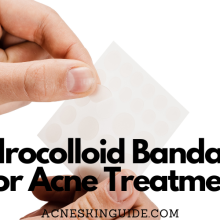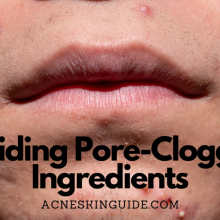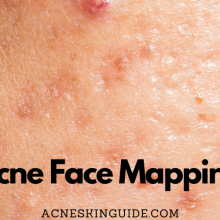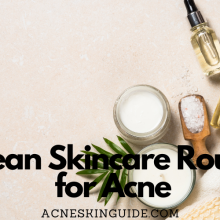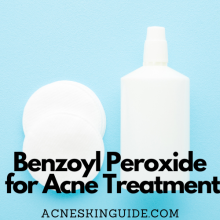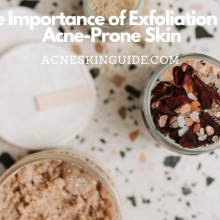Best Cleansers for Acne-Prone Skin – Ingredients to Look For | AcneSkinGuide
Summary of The Best Cleansers for Acne-Prone Skin
Finding the right cleanser is key for managing acne-prone skin. Look for acne-fighting ingredients like salicylic acid to unclog pores, benzoyl peroxide to kill bacteria, and sulfur to absorb oil. Opt for gentle options like glycolic acid or cleansers with antimicrobial botanicals like tea tree oil. Avoid pore-clogging oils and use non-comedogenic, pH balanced formulas. For sensitive skin, choose ultra-gentle, hydrating cleansers without harsh actives.
However, cleansing alone won’t clear acne – incorporate other treatments like spot treatments, medicated creams/gels, and moisturizers. Good skincare habits include frequently changing pillowcases, avoiding scrubs during breakouts, and using non-comedogenic makeup. If over-the-counter products fail after 2-3 months, see a dermatologist for prescription options. With trial and error to find the ideal routine, you can get acne under control.
Our Top 5 Recommended Acne Treatment Products

The Power of Acne-Fighting Cleansers
Dealing with acne can be frustrating, but finding the right cleanser is a crucial first step in getting breakouts under control. When it comes to acne-prone skin, not just any face wash will do – you need formulas specifically designed to treat and prevent those pesky pimples. From salicylic acid to benzoyl peroxide, certain tried-and-true ingredients have proven their ability to unclog pores, kill acne-causing bacteria, and regulate oil production.
Salicylic Acid: The Pore-Unclogging Superstar
Let’s start with one of the heavy hitters – salicylic acid. This beta hydroxy acid is a keratolytic, meaning it can penetrate into pores to dissolve oil and break down the dead skin cells that clog them. Dermatologists typically recommend looking for salicylic acid concentrations between 0.5-2% to treat and prevent breakouts without excessive dryness or irritation. Popular and effective options include the cult-favorite CeraVe Renewing SA Cleanser which contains 0.5% salicylic acid and Neutrogena Oil-Free Acne Wash with 2% salicylic acid.
Benzoyl Peroxide: The Bacteria Killer
Another heavy-hitting ingredient is benzoyl peroxide, which has potent antibacterial properties. It works by killing the Propionibacterium acnes (P. acnes) bacteria linked to inflammatory acne formation while also helping to dry out excess oil. While incredibly effective, benzoyl peroxide does have some downsides like causing irritation, peeling, and bleaching of fabrics. To manage potential dryness, look for a cleanser with lower concentrations like 2.5-4% and follow up with a good non-comedogenic moisturizer. CeraVe’s Acne Foaming Cream Cleanser with 4% benzoyl peroxide is a solid option.
AHAs: The Gentle Exfoliators
If you prefer something gentler, glycolic acid and other alpha hydroxy acids (AHAs) are an excellent choice. These provide chemical exfoliation to slough off dead skin cells and keep pores clear without excessive irritation. The Pixi Glow Tonic Cleansing Gel with 5% glycolic acid is a top pick, or try cleansers with lactic acid like Laneige’s Cream Skin Milk Oil Cleanser.
Sulfur: The Oil-Absorbing Workhorse
Sulfur is another lesser-known but highly effective ingredient for acne sufferers. With both antimicrobial and oil-absorbing properties, sulfur can treat existing breakouts while preventing future ones. Look for face washes with around 3-8% sulfur like Myself Clarifying Sulfur Cleanser or the affordable Grounded Sage Clarifying Facial Cleanser. Be warned that sulfur products can have an off-putting smell.
Antimicrobials: Killing Acne-Causing Bacteria
Some cleansers rely on antimicrobial ingredients to kill that pesky P. acnes bacteria. Triclosan is a common one found in brands like Dial Acne Control Face Wash alongside salicylic acid. However, triclosan has faced some controversy over potential health and environmental risks, so many brands have started phasing it out in favor of plant-based antimicrobials like tea tree oil.
Non-Comedogenic & pH Balanced Picks
When dealing with acne, it’s also crucial to use cleansers that won’t further clog pores or irritate inflamed skin. That means avoiding pore-clogging oils and choosing non-comedogenic, oil-free gel or foaming cleansers like Cetaphil’s classic Daily Facial Cleanser. Using a pH balanced cleanser in the skin’s slightly acidic range of 4.5-5.5 is another way to avoid disrupting the protective acid mantle. Affordable picks like CeraVe’s Foaming Facial Cleanser fit the bill.
Ultra-Gentle Options for Sensitive Skin
For those with very sensitive, easily-irritated acne-prone skin, look for ultra-gentle, hydrating formulas without harsh ingredients. Brands like Cetaphil, CeraVe, and La Roche-Posay offer excellent gentle cleansers that remove impurities without stripping the skin.
Beyond Cleansing: A Full Acne Treatment Plan
It’s important to note that while cleansers are essential for managing acne, they’re not a full treatment plan. An effective skincare routine should incorporate other acne treatments like spot treatments with maximum-strength benzoyl peroxide, medicated creams or gels with ingredients like retinoids or antibiotics prescribed by a dermatologist, and a non-comedogenic moisturizer. Cleanse gently using lukewarm water and avoid harsh scrubbing which can further inflame acne.
Lifestyle Tips for Clearer Skin
In addition to your cleansing routine and products, lifestyle factors also play a role. Experts recommend changing pillowcases frequently to avoid re-exposing skin to pore-clogging oils and bacteria, avoiding physical scrubs entirely during active breakouts, and using non-comedogenic makeup and sunscreen if you wear either daily.
When to See a Dermatologist
If over-the-counter acne products fail to provide enough improvement after 2-3 months of consistent use, it may be time to bite the bullet and see a dermatologist. They can prescribe more potent prescription creams, oral medications like antibiotics or spironolactone, or recommend professional treatments like chemical peels.
The Acne-Fighting Cleanser Takeaway
So in summary, when seeking out the best cleanser for acne-prone skin, look for proven acne-fighting ingredients like salicylic acid, benzoyl peroxide, glycolic acid, sulfur, and botanicals with antimicrobial properties. Use gentle, non-comedogenic, pH balanced formulas and avoid over-drying the skin. But don’t expect miracles from just a cleanser – incorporate other treatments too. With some trial and error to find what works for your individual skin, you’ll be on your way to clearer days ahead.
FAQs and Answers
Can using too many active ingredients in cleansers cause more irritation?
Yes, using too many active ingredients like salicylic acid, benzoyl peroxide, and glycolic acid in a single cleanser can potentially cause more irritation for acne-prone skin. These ingredients are very effective at treating and preventing acne, but they can also be quite drying and irritating if overused or combined excessively.
Dermatologists generally recommend introducing only one active acne-fighting ingredient at a time and building up a routine slowly. Using multiple harsh actives together increases the risk of over-drying, peeling, redness, and damaging the skin’s protective barrier. This can then lead to more oil production as the skin overcompensates.
It’s best to stick to just one key active ingredient in your daily cleanser, like a lower concentration of salicylic acid or benzoyl peroxide around 2-4%. You can then use other complementary leave-on treatments with different actives if needed. Start gently and give your skin time to adjust before potentially alternating or layering multiple actives. Listen to your skin and scale back if it becomes overly dried out or irritated. Moderation with actives is key for acne-prone skin.
Are natural/botanical acne-fighting ingredients as effective as synthetic ones?
Natural/botanical and synthetic acne-fighting ingredients can both be effective, but they may differ in their potency and mechanisms of action.
Many natural ingredients like tea tree oil, neem, and willow bark extract (a natural source of salicylic acid) do have antimicrobial and anti-inflammatory properties that can help treat acne. However, their acne-fighting abilities are generally considered less potent compared to synthetic ingredients.
For example, studies show that 5% tea tree oil can be as effective as 5% benzoyl peroxide for mild to moderate acne. But benzoyl peroxide is still regarded as more potent at killing acne-causing bacteria. Natural salicylic acid from willow bark may not exfoliate as well as the synthetic version.
That said, some people prefer to use natural products because they can be gentler and cause less irritation, dryness, and side effects compared to harsher synthetic ingredients like benzoyl peroxide.
Ultimately, both natural and synthetic anti-acne ingredients can be effective. But synthetic options like benzoyl peroxide and prescription retinoids tend to be more scientifically-proven and clinically backed for treating more severe acne. Natural botanicals may work better for mild acne or as complementary treatments alongside other products. As with any acne regimen, it requires some trial and error to see what works best for your individual skin.
How do I choose an acne cleanser if I have dry, sensitive skin?
If you have dry, sensitive, acne-prone skin, choosing the right cleanser is crucial to avoid further irritation and dryness. Here are some tips:
- Avoid harsh acne ingredients: Stay away from cleansers containing benzoyl peroxide, high concentrations of salicylic acid (>0.5%), and sulfur as these can be extremely drying and irritating for sensitive skin types.
- Look for gentle, creamy formulas: Opt for non-foaming, creamy cleansers that are labeled “gentle” or “hydrating.” Avoid soaps or cleansers with sulfates which can strip the skin.
- Choose fragrance-free products: Added fragrances are a common irritant, so stick to fragrance-free and hypoallergenic cleansers.
- Consider ceramide-containing cleansers: Ceramides help restore the skin’s protective barrier. Brands like CeraVe and Cetaphil offer ceramide-based gentle cleansers.
- Introduce actives slowly: If you do want to use an acne-fighting active like a low percentage of salicylic acid, introduce it very slowly 1-2 times per week at first.
- Try non-lathering cleansing milks/lotions: Extremely dry skin may do better with non-lathering cleansing milks or lotions rather than traditional lathering cleansers.
Brands that offer great gentle acne cleansers for sensitive skin include Cetaphil, CeraVe, La Roche-Posay, Aveeno and Vanicream. Be sure to also follow with a fragrance-free, non-comedogenic moisturizer. With very sensitive skin, less is often more when it comes to acne cleansing.
Should I use the same acne cleanser in the morning and evening?
There are differing opinions on whether you should use the same acne cleanser in the morning and evening. Here are some considerations:
Many dermatologists recommend using different cleansers morning and night:
- Morning: Use a gentle, hydrating, non-medicated cleanser to avoid stripping the skin
- Evening: Use an acne-fighting cleanser with active ingredients like salicylic acid or benzoyl peroxide to treat breakouts
The reasoning is that medicated cleansers can be drying, so using them twice a day may cause excessive irritation and dryness, especially for those with sensitive skin. The evening allows the active ingredients to work overnight.
However, other dermatologists say it’s fine to use the same acne cleanser morning and night if your skin tolerates it well. This ensures you are consistently treating acne all day.
If you go this route, look for an acne cleanser with lower concentrations of active ingredients (e.g. 2% salicylic acid or benzoyl peroxide) to minimize potential irritation from twice daily use.
Ultimately, it comes down to your individual skin’s sensitivity and how well it handles medicated cleansers. If you experience excessive dryness, irritation or peeling, scale back to once daily use in the evening. But if your skin responds well, using the same gentle acne cleanser both morning and night can be effective.
Pay close attention to how your skin reacts and adjust your routine as needed. The key is finding the right balance of treating acne without overly compromising your skin’s barrier.
Can using an acne cleanser alone clear my breakouts?
No, using an acne cleanser alone is unlikely to fully clear and treat acne breakouts. While a good acne-fighting cleanser is an important part of a treatment regimen, it should be used in combination with other leave-on acne products for best results.
The main role of an acne cleanser is to help remove pore-clogging oil, dirt, bacteria and dead skin cells from the skin’s surface when you cleanse. Ingredients like salicylic acid, benzoyl peroxide or glycolic acid in the cleanser can provide some treatment effects as well.
However, cleansers are simply rinsed off after brief contact with the skin. Their effects are limited compared to leave-on acne medication that remains on the skin to work overnight.
To truly treat and prevent acne breakouts, dermatologists recommend using an acne cleanser along with other leave-on topical treatments such as:
- Spot treatments with maximum-strength benzoyl peroxide
- Daily leave-on treatments with retinoids, antibiotics or prescription creams/gels
- Oil-free, non-comedogenic moisturizers
These types of consistent leave-on acne medications can better penetrate the skin and treat acne at its source within the pores over time.
An acne cleanser plays a supporting role by removing surface debris, excess oil and acne-causing bacteria on a daily basis. But it needs to be combined with separate leave-on treatments to provide more concentrated, long-lasting effects to keep acne under control.
So in summary, while an acne cleanser is beneficial, using just a cleanser alone is usually not enough to fully clear acne breakouts. A full multi-product regimen is typically needed for best results.

